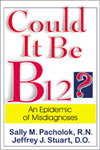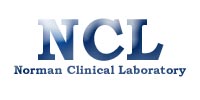Serum b12 Assay
Falsely positive serum B12 tests (low levels in the absence of B12 deficiency)
Study shows assay to have only a 22.2% positive predictive value. After a five-year
follow up on low serum B12 levels nearly 4 of 5 individuals were without clinical
evidence of B12 deficiency.17,18
Of 504 patients with low serum B12, only 22% (109) had clinically important
deficiency.26
Of 47 subjects with low serum B12 only 7 (15%) were shown to be clinically B12
deficient.17,18
About 20-40% of elderly people with low serum vitamin B12 levels have completely
normal metabolic status 1,2 and cannot be regarded as B12 deficient.
"Because low cobalamin concentrations can occur in the absence of deficiency,
the term 'cobalamin deficiency' should probably be reserved for those
cases with accompanying clinical or metabolic evidence supporting the diagnosis".
2
For clarification, there is an inexact relationship between serum B12 and cellular
B12 since the total serum B12 is bound to three carriers proteins: transcobalamin-I
(TC-I),TC II and TC III. Only TC-II, which carries less than 20% of the serum
B12, delivers B12 to the tissues. Measurement of TC-II levels have not been
proven to be an accurate indicator of tissue B12 deficiency 6 and the assay
is not a functional test.
| |
Falsely negative serum B12 tests (normal levels in the presence of B12 deficiency)
Of 35 seniors with high uMMA, 49% had a normal serum B12 level.14
Subjects (14%) found B12 deficient showed equal numbers with serum B12 <
200 pg/ml (below normal) and between 200 and 300 pg/ml.27 Accordingly, MMA
testing was recommended for individuals with serum B12 levels < 350 pg/ml
.28 However, another study advised against serum MMA (SMMA) testing subjects
with low normal serum B12 since huge numbers of non B12 deficient individuals
would be caught in the net.2 This dilemma illustrates the need to use the accurate
uMMA test.
Of 23 vegetarians identified with high uMMA, 83% (19/23) had normal serum B12
levels.5
Asymptomatic patients and healthy volunteers with normal B12 levels but elevated
MMA have been reported. 1,2,5,14,27-32
Five geriatric patients with normal serum B12 levels and suspected Alzheimer's
dementia, were reported successfully reversed with intramuscular B12. The lower
limit of vitamin B12 in Japan and some European countries is 500 pg/mL, which
is based on neurological criteria.32 | |
Serum MMA test
Falsely positive serum MMA tests
Norman and Cronin documented reports of the SMMA assay yielding falsely positive
results in conditions of renal insufficiency, thyroid disease, pregnancy, small
bowel bacterial overgrowth, hemoconcentration, and for unexplained reasons.33
Renal insufficiency was associate with 25.5% of all abnormal SMMA levels in
one survey of 725 individuals over age 60. Carmel et. al2 recommend renal insufficiency must be considered in evaluation high SMMA levels.
A study concludes that plasma creatinine must be included when assessing SMMA
levels, even within the normal range.34
| |
Falsely negative serum MMA tests
|
The serum MMA test was found less sensitive than the urinary MMA assay. In a
study of suspected B12 deficient vegetarians, the SMMA test (normal = 73-271
nm/L) identified 5 of 8 (63%) whereas the uMMA (normal < 4.0) assay detected
7 of 8 (88%). uMMA levels normalized with B12 therapy but not all SMMA levels.
Serum B12 levels supported the uMMA test as being valid .20 Although the numbers
are small, this article indicates that if large numbers of individuals are tested,
many individuals with neurologic manifestations may be missed without using
the uMMA assay. | |
Serum Homocysteine
Published data show that serum Hcys levels are rarely, if ever, needed in addition
to MMA levels to diagnose B12 deficiency. Reevaluating published data that listed
both SMMA and Hcys using the current normal value for SMMA, of 37 B12 deficient
patients, all were identified with high SMMA levels.22 Of 78 patients reported
B12 deficient using SMMA and Hcys, 77 were identified by high SMMA The remaining
patient with high serum Hcys was folate deficient, which could account for the
high Hcys level.35
In an uMMA screening study, serum Hcys levels were above normal in only 9 of
16 subjects (14). SMMA rose in gastrectomized rats within two months after surgery
whereas Hcys did not become elevated until ten months after surgery 36 and rats
feed a B12 deficient diet showed elevated SMMA after 3 months but normal Hcys
after 7 months.37 In nine vegetarians with high uMMA and /or low serum B12 levels,
all had normal Hcys levels (Normal = 5.1-13.9 mol/L).20 Serum Hcys levels are
also elevated by folate deficiency as well as numerous other conditions.6
|
Schilling Test
Falsely normal
The Schilling test can be falsely normal in individuals who are unable to absorb
food-bound vitamin B12 but can absorb crystalline B12.38
| |
uMMA Test
Falsely positive
In a double blinded prospective clinical evaluation of the uMMA test, the assay
was reported to have a specificity of 99%.17 However, the one patient reported
to have falsely high uMMA of 9.5 (normal <5.0) did not have a follow up uMMA
test after B12 therapy and therefore was most likely tissue deficient without
overt clinical evidence.
Of 16 subjects with elevated uMMA, all had normal MMA after B12 IM. (p<.001).14
Of 7 subjects with high uMMA all normalized with B12 therapy.20 Other studies
noting high uMMA 5,9-11,39,40 demonstrate reductions of MMA with effective therapy
and no problem with falsely high uMMA. | |
Falsely negative
| The uMMA test identified non-anemic elderly individuals 14 and asymptomatic
vegetarians 5 as B12 deficient. uMMA normalized with adequate B12 therapy. Normal
serum B12 was found in 49% of the non-anemic elderly (normal uMMA < 5.0) and
83% of the vegetarian population. (normal uMMA < 4.0). These individual may
have been missed using the conventional serum B12 assay. These data demonstrate
that there is no problem with falsely negative uMMA and there is no study to
date reporting falsely negative uMMA. | |
CONCLUSION
The Mayo Clinic Proceedings spotlighted the uMMA test as preferred because of
convenience and sensitivity.41
In recent comparative studies, the uMMA test was found more sensitive than the
serum B12 assay5 or the SMMA test.20
A study found that patients with neurologic disturbances excreted larger amounts
of uMMA than those without neurologic disorders42 and recommend the uMMA assay
use to attenuate an important cause of permanent neurologic disability.43
| The uMMA test reflects tissue/cellular vitamin B12 deficiency and is the leading
candidate as the "gold standard" assay for identifying tissue B12
deficiency.19,21 | |
|
For test kit requests or more information E-Mail NCL
or
Call toll free at 1-800-397-7408"Not by might, nor by power, but by my Spirit, says the Lord of hosts"
|

